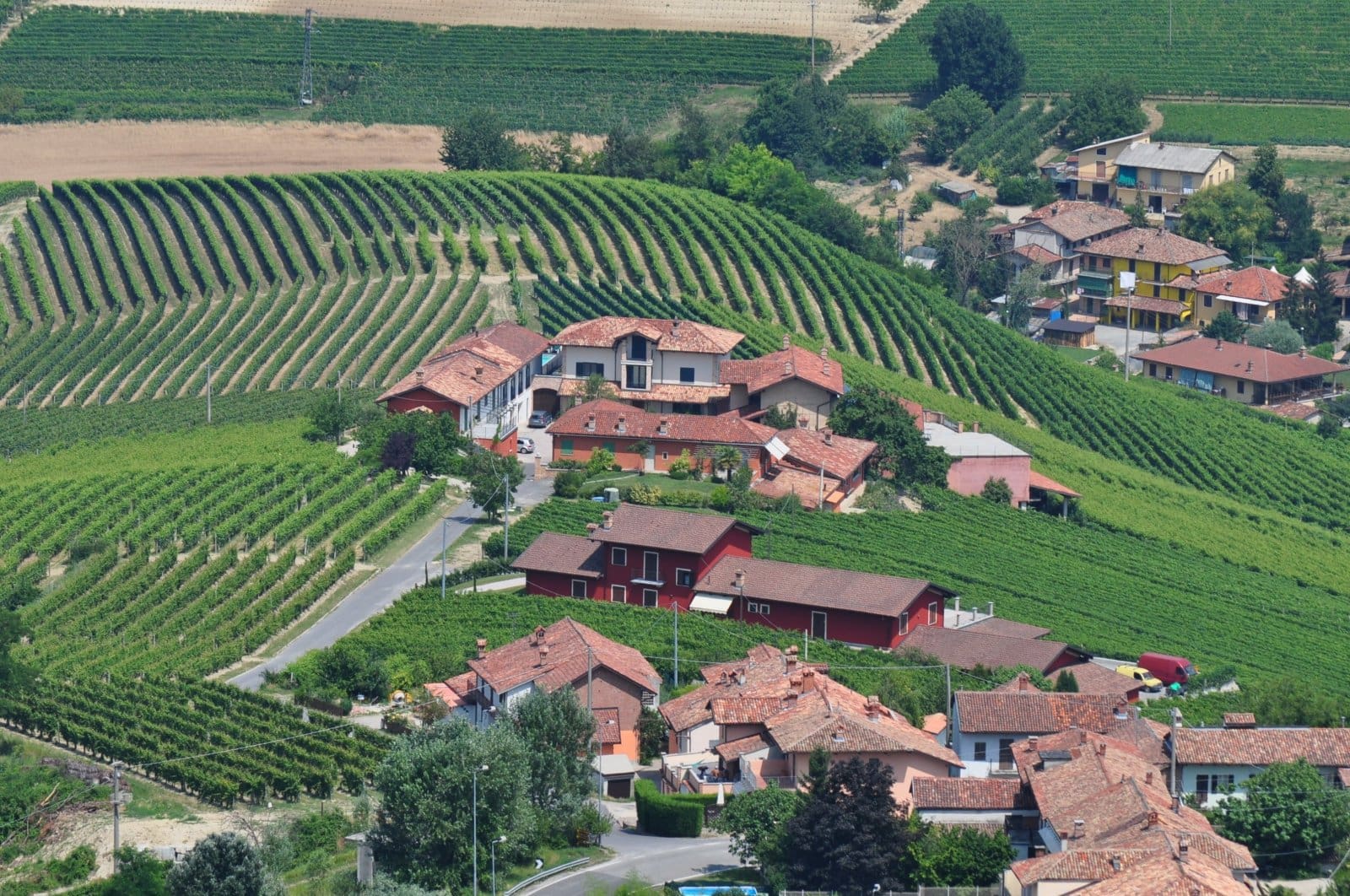In the northwest of Italy, in the shadows of Mont Blanc and the Matterhorn, lies the Piedmont. It’s a land that abuts (in ways both sociologically and geographically) Switzerland’s southern and France’s southeastern frontiers. The region is surrounded on three sides by the Alps which spill down into a hilly, rustic land, and finally into rice paddies along the Po River.

Because of the Nebbiolo grape’s small berry size and relatively high ratio of skin to pulp/juice, Barolos have been historically very high in tannins. Due to the cool climate of the region, the grapes also develop a fairly high acidity and it is this combination of high tannins and high acidity along with a distinctive blend of tar and roses on the nose that helps enthusiasts identify the wine. In addition, while Barolo is a beautiful bright ruby or garnet with low opacity (almost like a Pinot Noir) in the glass, on the palate it is rich, deep, and full bodied with a round and silky mouthfeel more like you’d expect from a Cabernet or Merlot produced in a more southerly latitude.
Historically, the high tannins in Barolo meant that they required aging for 10-15 years before they were even drinkable. In the late 1970s and 1980s, however, the worldwide demand for more immediately drinkable and fruit driven wines led to something of a revolution in Barolo as some younger, more forward thinking wine makers began crafting Barolo wines in a way (shorter maceration and fermentation periods, less aging in new French oak and more aging in the bottle) that tames the tannins and allows enjoyment at a younger age.
Elio Altare is a producer who has excelled at and bec
The result is consistently award winning (93+ RP) wines that qualify for that most romantic Italian designation, “Vino da meditazione” or Meditation Wine. A good Barolo like that from the Altare family is meant to be appreciated for not only its incredible nose and palate characteristics, but also for its history – the near term history of the Altare family and their commitment to the region and to the ecological sustainability of their resources and care for the wine making craft as well as the longer history of the Barolo region itself going back to the House of Savoy in the 11th Century before there even WAS an “Italy.”
So you can imagine my excitement when I was able to snag a “vertical” of these great wines. I came into possession of five bottles of Elio Altare’s Barolo from 2006 (92 WS), 2007 (93 WS/94 JS), 2008 (91 WS/92 JS), 2009 (93 WS), and 2011 (91 WS/95 JS). I feel like I’ve acquired quite a treasure trove!
Now com
On the other hand, we could invite a few friends and open all five bottles sampling a taste from each to examine the differences across the vintages and ruminate about how Elio and his family are stewarding the vineyards and the terroir. We might even go back and look at weather patterns and other conditions over the years from 2006-2011 and consider why any differences or consistencies occur between the vintages. Now that’s true wine nerd territory!
Decisions, decisions. What would you suggest? I can guarantee you that no matter how these five bottles are disposed of, it will be with great love, care, and appreciation!

